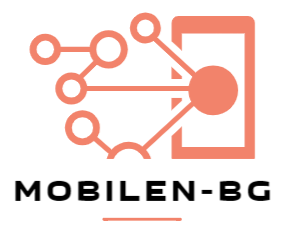In today’s digital age, it is becoming increasingly difficult to escape the constant distractions that come with smartphones and other digital devices. For individuals with Attention Deficit Hyperactivity Disorder (ADHD), these distractions can be particularly challenging to navigate. In this blog post, we will explore the rise of digital distractions and their impact on individuals with ADHD. We will also discuss strategies for managing smartphone use and minimizing digital distractions to help individuals with ADHD better manage their symptoms.
Key Takeaways
- Digital distractions are on the rise and can exacerbate symptoms of ADHD.
- Smartphones have been linked to ADHD due to their constant notifications and easy access to entertainment.
- Social media can worsen ADHD symptoms by providing a constant stream of information and distractions.
- Smartphones can negatively affect attention span in both adults and children with ADHD.
- Smartphone addiction can have serious consequences for those with ADHD, including decreased productivity and increased anxiety.
- Managing smartphone use and ADHD symptoms requires setting boundaries and limits.
- Building healthy habits and routines can help minimize digital distractions.
- Mindfulness and meditation can be beneficial for those with ADHD and smartphone use.
- Seeking professional help is important for managing ADHD and digital distractions.
The Rise of Digital Distractions and ADHD
ADHD is a neurodevelopmental disorder characterized by symptoms such as inattention, hyperactivity, and impulsivity. According to the Centers for Disease Control and Prevention (CDC), approximately 6.1 million children in the United States have been diagnosed with ADHD. Additionally, the prevalence of ADHD in adults is estimated to be around 4-5%.
At the same time, the use of smartphones and other digital devices has skyrocketed in recent years. According to a survey conducted by Pew Research Center, 81% of Americans own a smartphone, and this number is even higher among younger age groups. With the increasing prevalence of ADHD and the widespread use of smartphones, it is important to understand how digital distractions can exacerbate ADHD symptoms.
Understanding the Connection Between Smartphones and ADHD
Research has shown a clear link between smartphone use and ADHD symptoms. A study published in the Journal of the American Medical Association (JAMA) found that adolescents who used digital media frequently were more likely to develop symptoms of ADHD over a two-year period. Another study published in the journal Child Development found that excessive screen time during childhood was associated with an increased risk of developing ADHD symptoms later in life.
So how exactly do smartphones contribute to ADHD symptoms? One theory is that the constant notifications, alerts, and multitasking required by smartphones can overload the brain’s ability to focus and pay attention. The constant stream of information and stimuli can make it difficult for individuals with ADHD to filter out distractions and stay on task.
The Impact of Social Media on ADHD Symptoms
| Metrics | Findings |
|---|---|
| Increased Screen Time | Linked to worsening ADHD symptoms |
| Social Media Use | May lead to increased distractibility and impulsivity |
| Online Bullying | Can exacerbate anxiety and depression in children with ADHD |
| Positive Social Connections | Can improve self-esteem and reduce feelings of isolation in children with ADHD |
| Online Support Groups | Can provide helpful resources and emotional support for parents and individuals with ADHD |
Social media, in particular, can have a negative impact on individuals with ADHD. The constant scrolling, liking, and commenting can be highly addictive and can easily lead to excessive screen time. This can further exacerbate ADHD symptoms such as impulsivity and difficulty with self-control.
Additionally, social media platforms are designed to be highly engaging and attention-grabbing. They are filled with bright colors, flashy animations, and constantly updating content. For individuals with ADHD, these features can make it even more challenging to stay focused and resist the urge to constantly check their social media feeds.
How Smartphones Affect Attention Span in Adults and Children with ADHD
One of the hallmark symptoms of ADHD is difficulty with attention span and staying focused. Smartphones can significantly impact attention span in both adults and children with ADHD. Research has shown that the constant interruptions and distractions caused by smartphones can make it difficult for individuals with ADHD to sustain their attention on a task.
A study published in the journal Computers in Human Behavior found that smartphone use was associated with decreased sustained attention in both adults and children with ADHD. The study also found that individuals with ADHD were more likely to engage in excessive smartphone use compared to those without ADHD.
The Negative Consequences of Smartphone Addiction for ADHD Sufferers

Smartphone addiction can have serious consequences for individuals with ADHD. Excessive smartphone use can interfere with daily functioning, disrupt sleep patterns, and negatively impact relationships and social interactions. It can also worsen symptoms of ADHD such as impulsivity, distractibility, and difficulty with self-control.
Furthermore, smartphone addiction can lead to a cycle of procrastination and poor time management. Individuals with ADHD may find themselves constantly getting distracted by their smartphones, leading to a decrease in productivity and an increase in stress and frustration.
Strategies for Managing Smartphone Use and ADHD Symptoms
Fortunately, there are strategies that can help individuals with ADHD manage their smartphone use and minimize digital distractions. One effective strategy is to set specific boundaries and limits for smartphone use. This can include designating specific times of the day for smartphone use, turning off notifications, and setting aside dedicated periods of time for focused work or leisure activities.
Another strategy is to utilize apps and tools that can help manage smartphone use. There are a variety of apps available that can track screen time, block distracting websites or apps, and provide reminders for breaks or tasks. These tools can be particularly helpful for individuals with ADHD who may struggle with self-regulation and impulse control.
The Importance of Setting Boundaries and Limits for Smartphone Use
Setting boundaries and limits for smartphone use is crucial for individuals with ADHD. By establishing clear guidelines for when and how smartphones should be used, individuals with ADHD can better manage their symptoms and minimize distractions.
Setting boundaries can also help create a sense of structure and routine, which is important for individuals with ADHD. By having designated times for smartphone use, individuals with ADHD can better prioritize their tasks and activities, leading to increased productivity and a greater sense of control.
How to Build Healthy Habits and Routines to Minimize Digital Distractions
Building healthy habits and routines is essential for managing digital distractions and ADHD symptoms. This can include establishing a consistent sleep schedule, incorporating regular exercise into daily routines, and practicing mindfulness or meditation.
Creating a structured daily routine can help individuals with ADHD stay organized and focused. This can involve setting aside specific times for work or study, as well as incorporating regular breaks to rest and recharge. By following a consistent routine, individuals with ADHD can better manage their time and minimize the temptation to constantly check their smartphones.
The Benefits of Mindfulness and Meditation for ADHD and Smartphone Use
Mindfulness and meditation can be powerful tools for individuals with ADHD to manage their symptoms and minimize digital distractions. Research has shown that mindfulness practices can improve attention, reduce impulsivity, and enhance self-regulation.
By practicing mindfulness and meditation, individuals with ADHD can develop greater awareness of their thoughts and emotions, allowing them to better recognize and manage distractions. Mindfulness can also help individuals with ADHD cultivate a sense of calm and focus, making it easier to resist the urge to constantly check their smartphones.
Seeking Professional Help for ADHD and Digital Distractions
For some individuals with ADHD, managing smartphone use and minimizing digital distractions may require professional help. A healthcare provider or mental health professional can provide guidance and support in developing strategies to manage ADHD symptoms and reduce smartphone addiction.
Cognitive-behavioral therapy (CBT) is a commonly used approach for treating ADHD and smartphone addiction. CBT can help individuals with ADHD develop coping skills, improve time management, and establish healthier habits and routines. Medication may also be prescribed to help manage ADHD symptoms, particularly if they are significantly impacting daily functioning.
In conclusion, the rise of digital distractions has presented unique challenges for individuals with ADHD. The constant notifications, alerts, and multitasking required by smartphones can exacerbate ADHD symptoms such as inattention, impulsivity, and difficulty with self-control. However, by implementing strategies such as setting boundaries for smartphone use, building healthy habits and routines, and practicing mindfulness and meditation, individuals with ADHD can better manage their symptoms and minimize digital distractions. Seeking professional help may also be beneficial for those who are struggling to manage their ADHD symptoms and smartphone addiction. With the right tools and support, individuals with ADHD can navigate the digital world more effectively and lead fulfilling lives.
Check out this article on UMIDIGI G5 Unlocked Cell Phone, a feature-packed device for everyday use. The article explores how smartphones can affect individuals with ADHD and provides insights into how the UMIDIGI G5’s features can help manage distractions and improve focus. It discusses the phone’s user-friendly interface, customizable settings, and productivity apps that can assist individuals with ADHD in staying organized and on track. Whether you’re looking for a smartphone for personal or professional use, this article offers valuable information on how to choose a device that caters to your specific needs.








